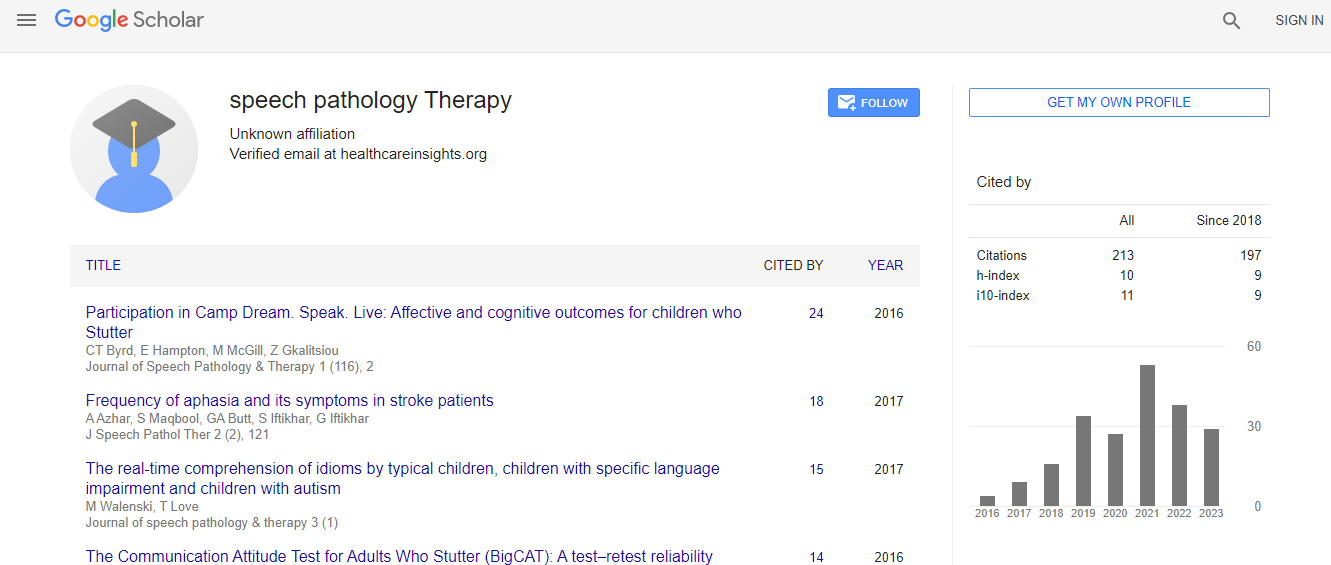Research Article
Post Monitor Studies for the Treatment of Speech Hand Synchronization for Adult who Stutter: 3 Months Follow Up
Abdulaziz Almudhi*Department of Rehabilitation Sciences, College of Applied Medical Sciences, King Saud University, Riyadh 11433, PO box 10219, Saudi Arabia
- *Corresponding Author:
- Dr. Abdulaziz Almudhi
Department of Rehabilitation Sciences
College of Applied Medical Sciences
King Saud University
Riyadh-11433, Kingdom of Saudi Arabia
Tel: 00966114693558
E-mail: aalmudhi@ksu.edu.sa
Received date: June 21, 2016; Accepted date: August 26, 2016; Published date: September 02, 2016
Citation: Almudhi A (2016) Post Monitor Studies for the Treatment of Speech Hand Synchronization for Adult who Stutter: 3 Months Follow Up. J Speech Pathol Ther 1:118. doi: 10.4172/2472-5005.1000118
Copyright: © 2016 Almudhi A. This is an open-access article distributed under the terms of the Creative Commons Attribution License, which permits unrestricted use, distribution, and reproduction in any medium, provided the original author and source are credited.
Abstract
Objective: The aim of the current study was to follow up for 3 months of stuttering therapy procedure in adults who stutters accomplishing spontaneous fluent speech.
Methods: In this pilot study, 30 subjects were selected and divided into (i) speech-hand synchronization (SHS) (ii) Camperdown Programme (CP) and (iii) control group (CG) for the treatment therapy. The post-treatment sessions were carried out for 3 months for 50 minutes a day for 10 weeks and each week was considered as week days (5 days).
Result: The SHS and CP patients could not show the significant association in post-treatment sessions for 3 months’ sessions. SSI-4, OASES and LCB were seems to be non-significant. However, SHS and CP was also seeming to be positive effect in assessments measuring well-being and self-perceptions.
Conclusion: The post-treatment results confirm the non-significant association for 3 months programme sessions for SHS and CP. However, SHS and CP was also found to have a positive effect in assessments measuring the quality of life with self-perceptions.
 Spanish
Spanish  Chinese
Chinese  Russian
Russian  German
German  French
French  Japanese
Japanese  Portuguese
Portuguese  Hindi
Hindi 